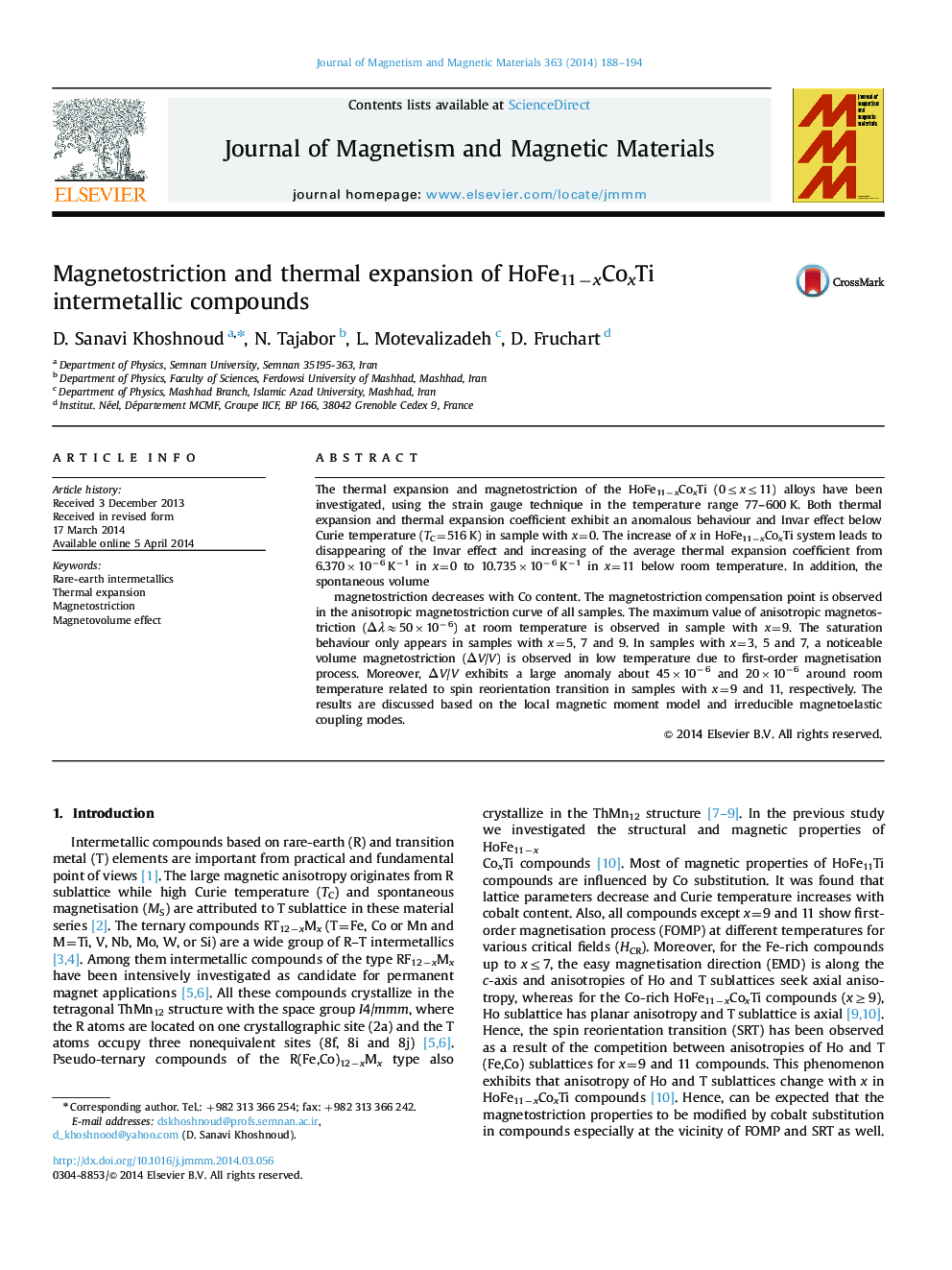| Article ID | Journal | Published Year | Pages | File Type |
|---|---|---|---|---|
| 1799657 | Journal of Magnetism and Magnetic Materials | 2014 | 7 Pages |
•Magnetoelastic properties of HoFe11−xCoxTi (x=0–11) compounds is investigated.•Thermal expansion coefficient values increase with Co substitution.•The maximum value of anisotropic magnetostriction at room temperature is observed in x=9.•A considerable volume effect is exhibited in low temperatures due to FOMP in samples with x=3, 5 and 7, and due to SRT in samples x=9 and 11 around room temperature.
The thermal expansion and magnetostriction of the HoFe11−xCoxTi (0≤x≤11) alloys have been investigated, using the strain gauge technique in the temperature range 77–600 K. Both thermal expansion and thermal expansion coefficient exhibit an anomalous behaviour and Invar effect below Curie temperature (TC=516 K) in sample with x=0. The increase of x in HoFe11−xCoxTi system leads to disappearing of the Invar effect and increasing of the average thermal expansion coefficient from 6.370×10−6 K−1 in x=0 to 10.735×10−6 K−1 in x=11 below room temperature. In addition, the spontaneous volumemagnetostriction decreases with Co content. The magnetostriction compensation point is observed in the anisotropic magnetostriction curve of all samples. The maximum value of anisotropic magnetostriction (Δλ≈50×10−6) at room temperature is observed in sample with x=9. The saturation behaviour only appears in samples with x=5, 7 and 9. In samples with x=3, 5 and 7, a noticeable volume magnetostriction (ΔV/V) is observed in low temperature due to first-order magnetisation process. Moreover, ΔV/V exhibits a large anomaly about 45×10−6 and 20×10−6 around room temperature related to spin reorientation transition in samples with x=9 and 11, respectively. The results are discussed based on the local magnetic moment model and irreducible magnetoelastic coupling modes.
